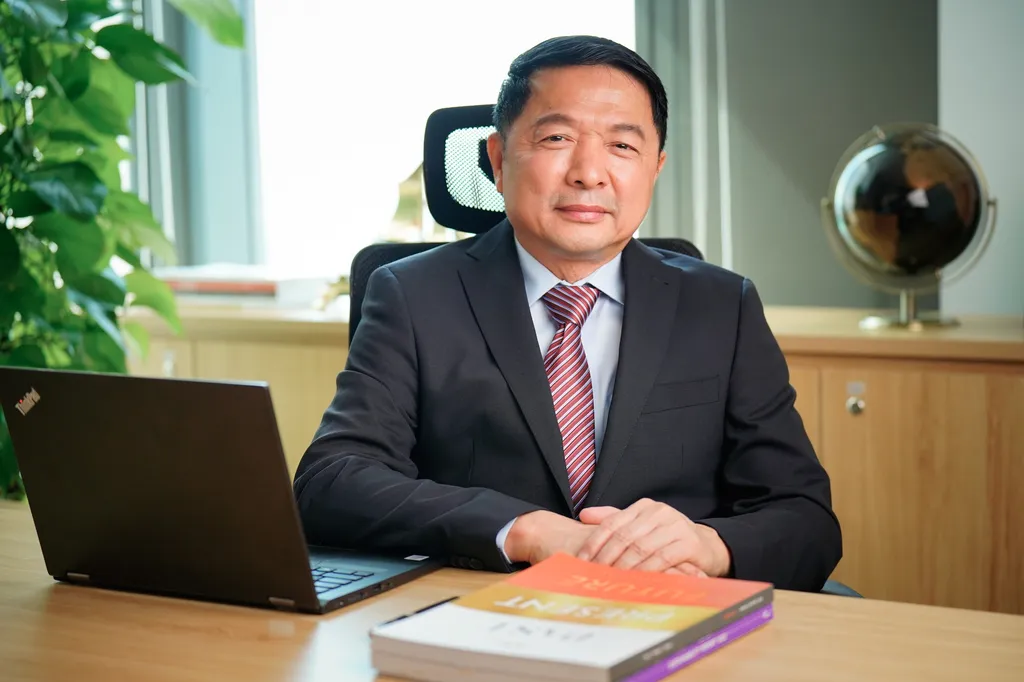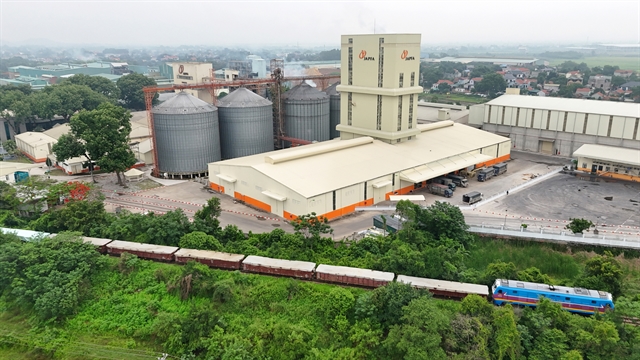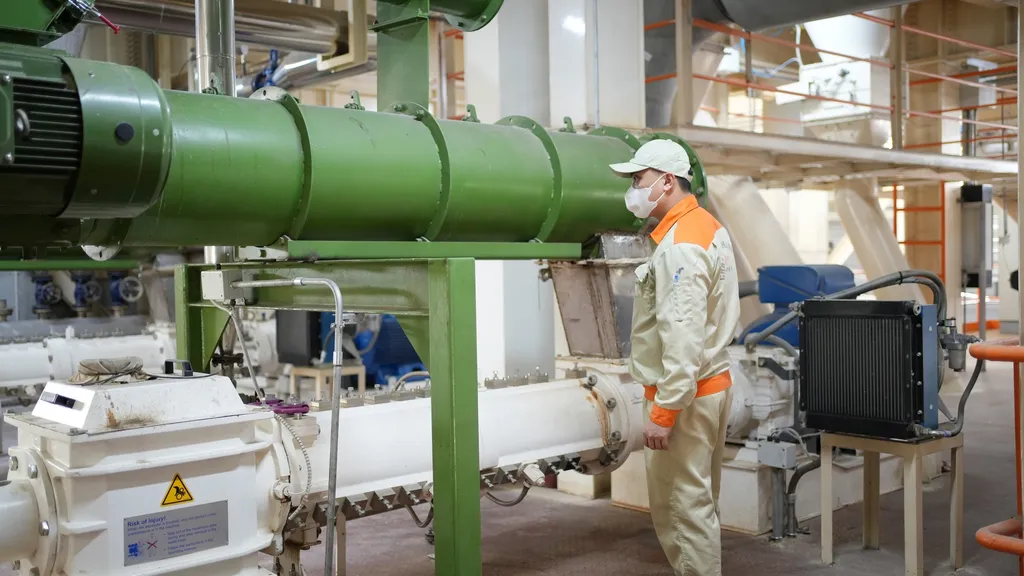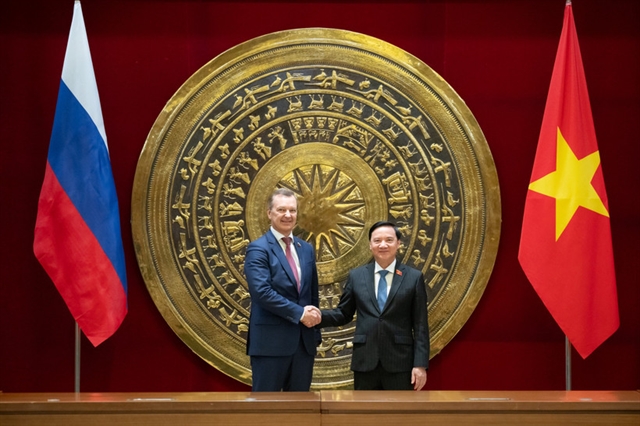 Talking Shop
Talking Shop

 |
| Clemens Tan, General Director of Japfa Comfeed Vietnam. — Photo Courtesy of Japfa Comfeed Vietnam |
In recent years, Việt Nam's livestock industry has faced significant challenges due to disease outbreaks, global political and economic turmoil and volatile feed prices.
But it has undergone outstanding changes in its structure towards the development of large, modern farming chains, and high growth in the first quarter of 2024 signals positive trends for the sector.
Clemens Tan, General Director of Japfa Comfeed Vietnam, speaks to Việt Nam News about the prospects of the livestock industry and his company's strategies to adapt and develop in the evolving market landscape.
While the livestock industry faces many challenges, its growth in the first quarter of this year was solid. How do you see the opportunities and challenges for industry?
The livestock industry in Việt Nam holds immense potential and offers significant growth opportunities. In recent years, the sector has seen impressive development marked by modern infrastructure and improvements in both quantity and quality. Livestock now accounts for 27 per cent of the agriculture sector. Notably, animal feed production has grown by 13-15 per cent annually, reflecting the sector's robust expansion.
Việt Nam's livestock infrastructure is also evolving towards modernisation.
Moreover, Việt Nam is forecast to maintain a high economic growth rate this year and in the coming years. Government policies encouraging businesses to invest in modern technology and sustainable practices further support the livestock industry's growth. This creates promising opportunities for foreign investors such as Japfa.
However, the industry faces several challenges. Disease outbreaks and fluctuating feed prices are big hurdles. Việt Nam's dependence on imported raw materials for animal feed makes it vulnerable to global political and economic fluctuations, which heavily impact feed prices – accounting for up to 70 per cent of costs in livestock farming.
A second major challenge is dealing with disease outbreaks. Recently we have suffered losses due to diseases affecting pigs and poultry, necessitating substantial investments in biosecurity. We have invested impressively in building facilities, establishing protocols, using disinfectants and conducting tests to prevent diseases.
Thirdly, consumers today are increasingly concerned about safe, high-quality products but also demand lower prices. This presents another challenge for us.
In every opportunity lies a challenge. At Japfa, we are implementing effective transformation strategies to overcome difficulties, explore opportunities and grow in Việt Nam.
 |
| A manufacturer of Japfa Comfeed Vietnam. The company this year develops a comprehensive transformation to overcome challenges and continue sustainable growth in a volatile market. — Photo Courtesy of Japfa Comfeed Vietnam |
Việt Nam's livestock industry is on a journey towards becoming a large-scale, industrialised and modernised sector. How do you assess the opportunities for livestock companies like Japfa in the Vietnamese market? What strategies does Japfa have to seize these opportunities?
In recent years, Việt Nam's livestock industry has undergone a remarkable transformation, with technology and environmental sustainability becoming the pillars of its development. In my view, this aligns with the global trend in modern livestock farming, and Việt Nam is moving towards sustainable growth in this sector.
This is why, over the past three years, Japfa has made substantial investments in building large factories and applying modern technologies to complete the feed-farm-food supply chain in the Vietnamese market. Concurrently, we are also upgrading farms in various localities to comply with Việt Nam's increasingly strict regulations on environmental standards and animal welfare.
The trend of modernising farms to meet these new requirements is quite costly. This presents a significant opportunity for large companies with strong financial capabilities looking to enter the Vietnamese market, but it also creates barriers for average companies due to the substantial investment needed.
However, these new policies will drive Việt Nam’s livestock industry towards sustainable development in line with global trends, providing clean and safe food for customers in the Vietnamese market and supporting export demands.
 |
| Japfa Comfeed Vietnam invests in advanced production lines and modern technology to enhance operational efficiency. — Photo Courtesy of Japfa Comfeed Vietnam |
Almost all livestock companies are adapting to thrive in a changing market landscape. What is Japfa doing to stay competitive and grow sustainably?
To overcome these challenges and continue sustainable growth in a volatile market, we have developed a comprehensive restructuring plan this year. This plan will shape the direction of Japfa Comfeed Vietnam for years to come.
Specifically, we aim to improve performance, optimise costs and establish a dynamic business model. Our focus on integrating AI technology and a data-driven approach is enabling us to make informed strategic choices, enhancing efficiency, safeguarding poultry health, and minimising expenses.
These strategic initiatives are paving the way for sustained and prosperous growth.
In the short term, the company will establish a new structure and evaluate operational processes to provide effective solutions, maximising support for Japfa Vietnam's activities.
In the following years, projects of digital transformation to simplify processes and develop a cohesive working environment will be implemented. We will continuously innovate and improve operations, fostering a culture of continuous learning throughout the company's development and for each individual at Japfa Vietnam.
In the long term, we aim for sustainable production and business. The use of advanced production technologies, the creation of a cohesive work environment and a focus on shared prosperity for the community where Japfa Vietnam operates will be our guiding principles.
With the advantage of a nearly 30-year presence in the Vietnamese market and a highly skilled, dedicated workforce, including many management personnel who have been with the company for 15-20 years, we believe Japfa will continue to enhance its competitive edge and establish a stronger position in the market.
One of the key goals of the Vietnamese livestock industry in the coming years is to enhance the export of livestock products to foreign markets. We know that Việt Nam is a strategic market for Japfa, and the group has invested heavily to complete a closed process in the feed-farm-food value chain.
What are your plans to export livestock products to other countries where Japfa operates?
Last year we opened the Bình Phước slaughterhouse, marking a significant milestone in completing the feed-farm-food supply chain, enabling Japfa Vietnam to export livestock products to foreign markets in future.
Regarding the export markets for Japfa Việt Nam’s livestock products, we are exploring potential opportunities in the Middle East, Asia and other markets.
In Southeast Asia, we have the opportunity to export to Singapore, a market to which our parent company in Indonesia is also striving to export Japfa products.
I believe there is great potential for exporting Japfa Vietnam's livestock products to foreign markets.
This potential is clearly reflected in the Vietnamese Government's commitment to developing a sustainable and disease-free livestock industry, and its substantial support for export activities. Currently we are in the process of completing the necessary procedures and are ready to implement our livestock export plans in the near future. — VNS




